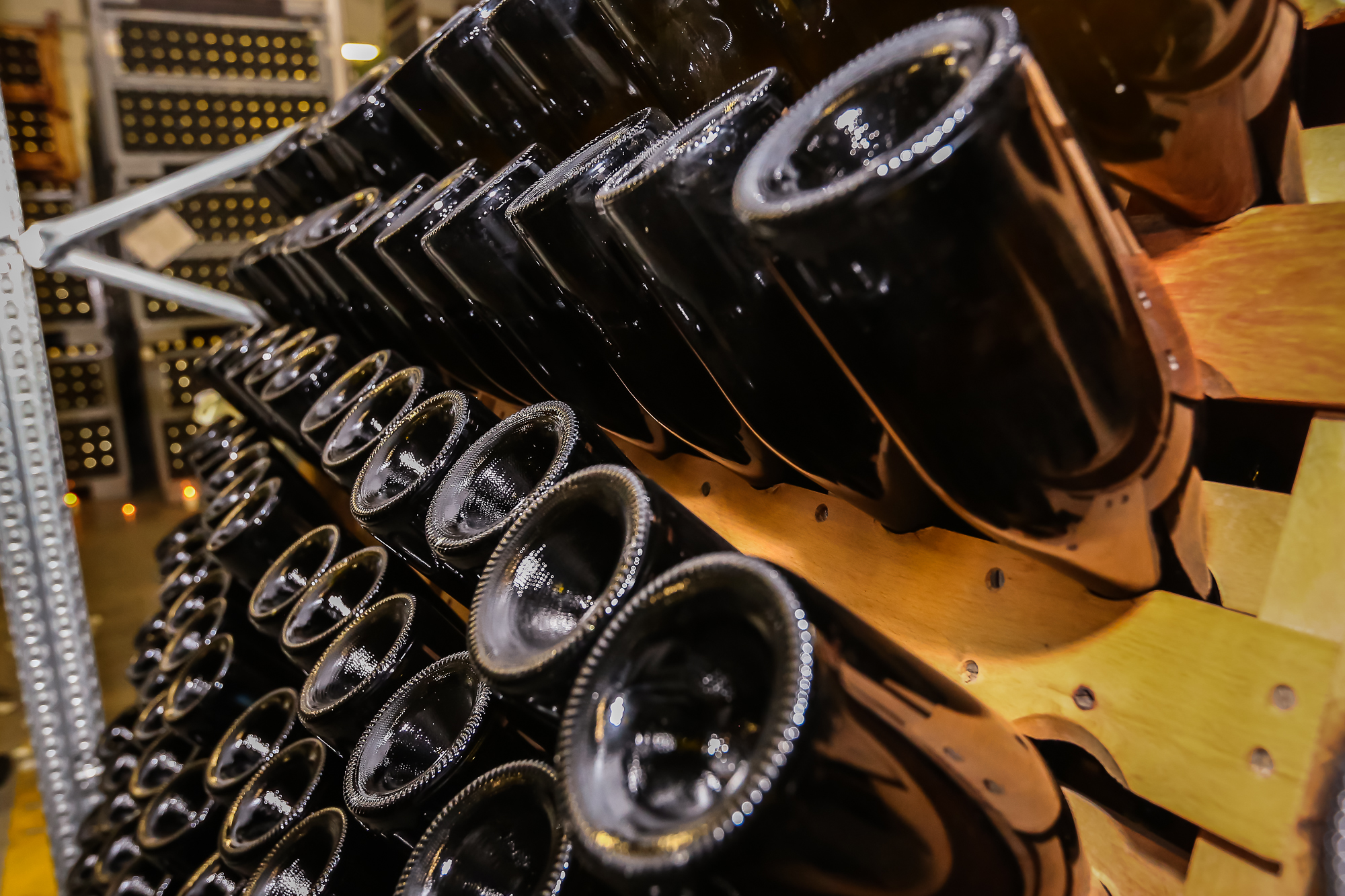Traditional method
Sparkling wine is unique in that it is made from ready wines by means of secondary fermentation. The grapes undergo double fermentation. To bring the cuvée (consolidation of basic wines) after it has rested to a second fermentation, so-called tirage liquor is added. It consists of quality wine with diluted sugar and an addition of a noble yeast culture.
The art of fermentation
Secondary fermentation takes place in a closed bottle with the traditional method. During secondary fermentation noble yeasts play an important role in that they turn sugar into alcohol and carbon dioxide that causes the well-known fizzing when the bottle opens.
After a thorough fermentation that takes several days the wine continues aging on noble yeasts for several months. After this period leads to shaking down the depot into the neck of the bottle by rotating. Bottles go gradually from a horizontal into a vertical position to enable yeast residues to be removed. The bottles are turned until the yeast sediments in the bottleneck. The bottles undergo an ice bath to help remove the sediment from the bottleneck after aging. When the bottles open, yeast residues are expelled due to the pressure within.
Smooth fizzing and delicate taste
The missing volume is replaced with expedition liqueur (mixture of the most quality wine and sugar). In the end the bottle is corked and secured with an agraffe (a hook-and-loop iron used for holding the cork).
This method is employed also to make the classic French sparkling wines from the famous Champagne region. Sparkling wines made with the traditional method are characterized with smooth fizzing and biscuit tones that are popular among demanding sparkling wine lovers. Exactly such taste and smooth fizzing can be found in Johann E. Hubert Extra Dry that is named after one of the founders. It owes its qualities to longer aging on noble yeasts. It is therefore suitable for archiving purposes.
More about making methods of our sparkling wine:

